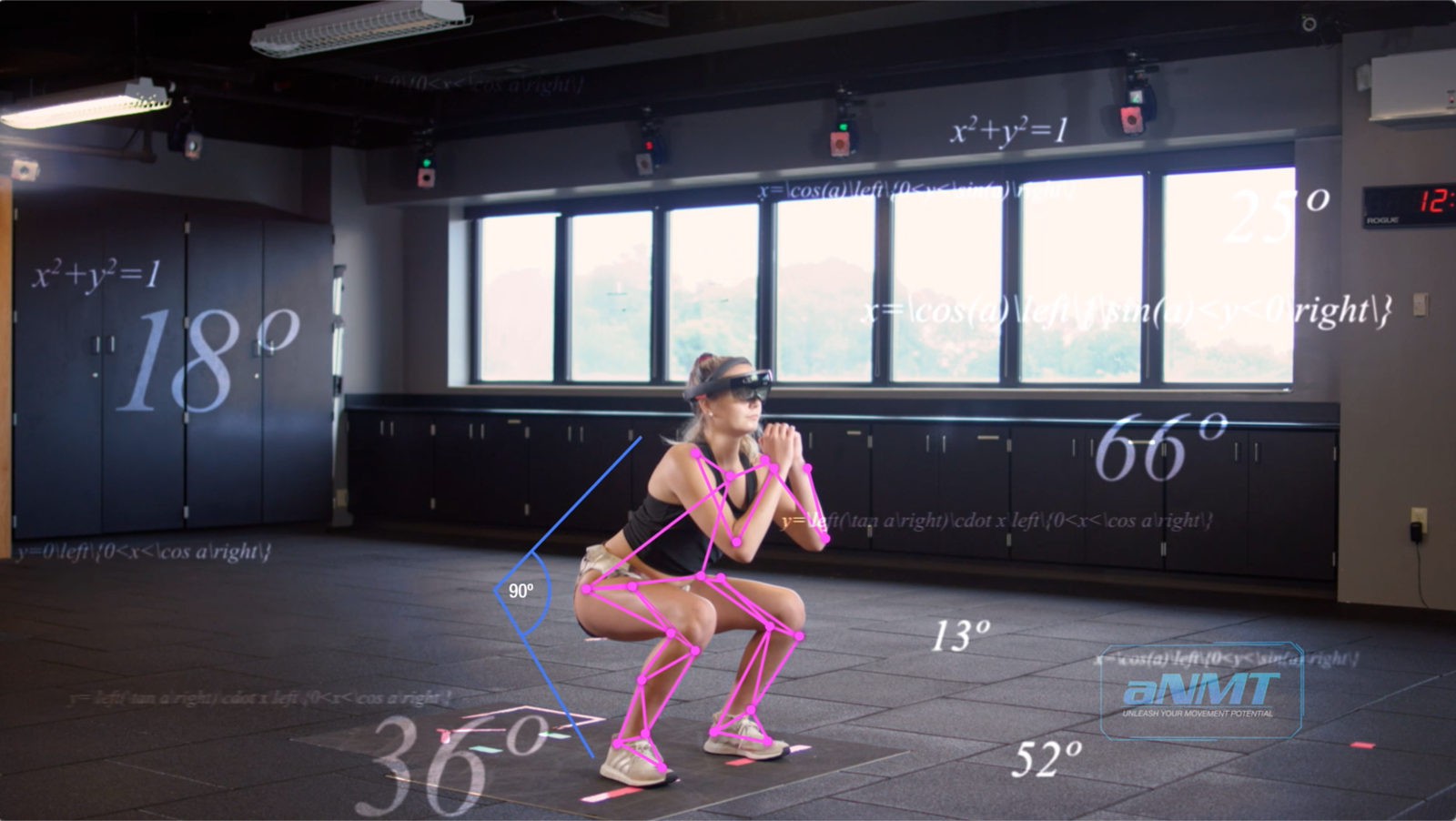
One in two adults are affected by a musculoskeletal condition and 61% of all sports injuries are musculoskeletal*. Conventional treatment of musculoskeletal injury begins with a subjective assessment of an individual’s physical movements. This assessment and corrections through physical therapy can result in high outcome variability, in part due to the manual process and the patient’s ability to retain and apply instructions on their own.
A team in the Division of Sports Medicine at Cincinnati Children’s Hospital Medical Center, in collaboration with psychologists at University of Cincinnati, developed an autonomous digital health solution called aNMT (Augmented Neuromuscular Training) to assess movement and provide feedback in real-time. Using cameras and proprietary algorithms, positional information is processed in milliseconds, giving biofeedback about whether a movement was correct. aNMT acts as a virtual coach to assess, correct, and optimize the user’s biomechanics, objectively and autonomously. Funding for the early development of this technology came from the National Institutes of Health, the State of Ohio and the Cincinnati Children’s Innovation Fund.
The technology transfer office of the medical center, Cincinnati Children’s Innovation Ventures (CCIV), worked closely with inventors to develop their investment pitches, and performed extensive due diligence to explore company formation. Ultimately, the team successfully negotiated the favorable terms of an exclusive license to IncludeHealth, a Cincinnati based start-up. CCIV worked closely with the medical center’s leadership and compliance department, seed investor and Entrepreneurial Services Provider CincyTech, and external counsel to develop the investment rationale, and to manage multiple agreements with the licensor, inventors and key contributors.
aNMT is being integrated into IncludeHealth’s cloud platform and connected equipment, to provide clinically validated treatment paths for patients, including children and adults recovering from musculoskeletal diseases, disorders or injuries; seniors with mobility issues or other musculoskeletal pain; and athletes of all ages and physical ability.
*Source: U.S. Bone and Joint Initiative
This story was originally published in 2021.
To see available technologies from research institutions, click here to visit the AUTM Innovation Marketplace.